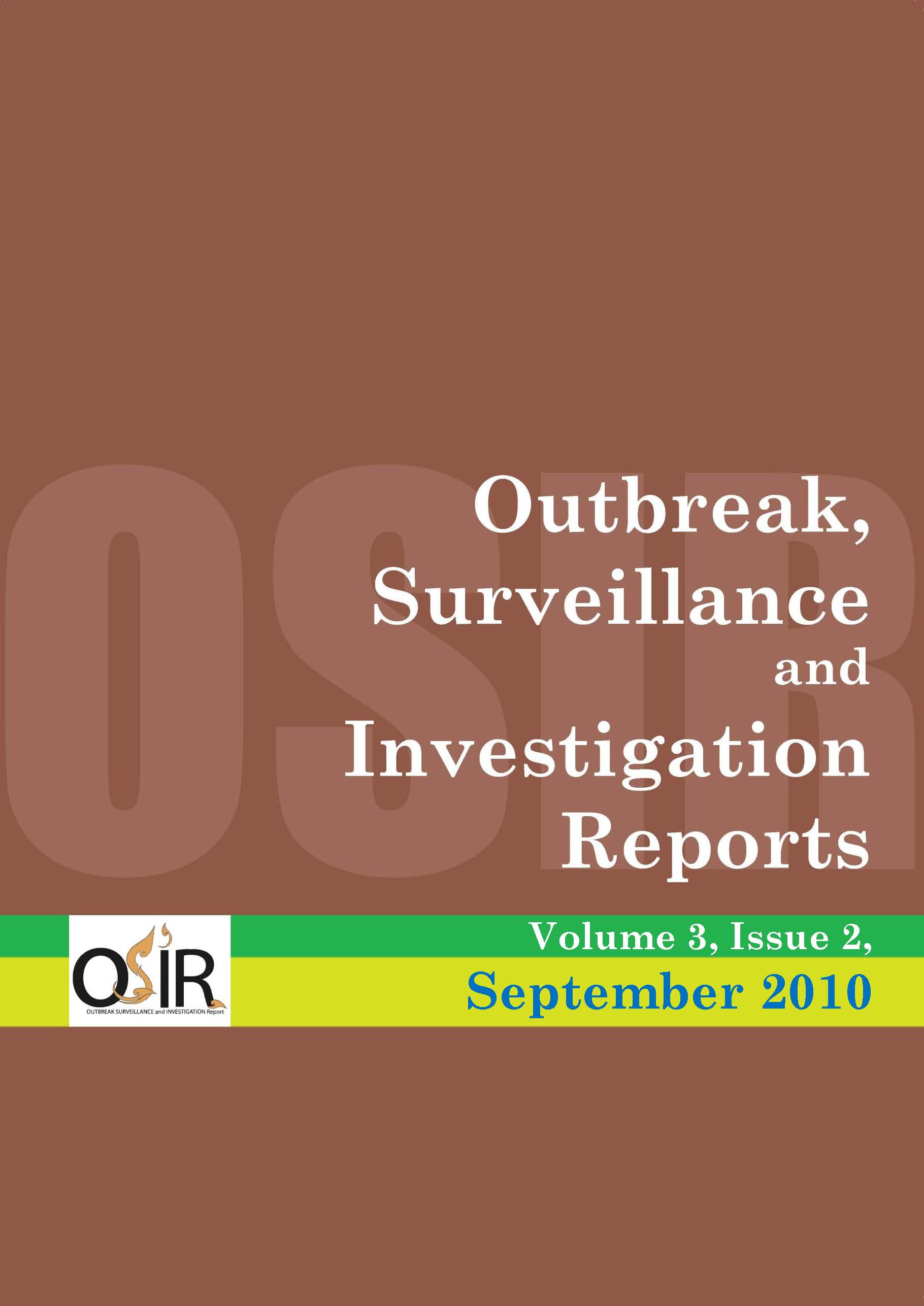Rubella Outbreak in a Boarding School, Malaysia, April 2007
DOI:
https://doi.org/10.59096/osir.v3i2.263361Keywords:
rubella, measles, maculopapular rash, control measure, MalaysiaAbstract
An outbreak of febrile illness associated with maculopapular rash was reported in a boarding school from 9-17 Apr 2007. An investigation was initiated to confirm the outbreak, determine the etiologic agent and mode of transmission and institute public health actions. Information on clinical data and vaccination status were collected through case finding among students and staff of the school. Those people with maculopapular rash associated with fever from 19 Mar to 2 Apr 2007 were defined as case and blood serology for measles and rubella were sent to the national reference laboratory for confirmation. Eighty nine cases were identified out of which 72% were males. Eighty-eight percents presented with low grade fever, 34% with mild upper respiratory infection, 25% with neck lymphadenopathy and 14% with conjunctivitis. 46% were positive for IgM rubella with males significantly more than females (p<0.001). All males did not have rubella immunization. Rubella was confirmed as the cause of outbreak and cases were treated symptomatically and isolated for seven days from onset of rash. Health education on self hygiene and possible risk to pregnant woman was given to students and staff. Rubella vaccination status of students entering boarding school was recommended irrespective of gender.
References
Centers for Disease Control and Prevention (CDC). Rubella. <http://www.cdc.gov/vaccines/pubs/pinkbook/downloads/rubella.pdf>
Greaves WL, Orenstein WA, Hinman AR, Nersesian WS. Clinical efficacy of rubella vaccine. Pediatr Infect Dis. 1983 Jul-Aug;2(4):284-6.
Braun C, et al. Congenital rubella syndrome despite repeated vaccination of the mother: a coincidence of vaccine failure with failure to vaccinate. Acta Paediatr. 1994 Jun;83(6):674-7.
Yusof AB, et al. Rubella outbreak amongst residential students in a military vocational school of Malaysia. Med J Malaysia. 2006 Aug;61(3):296-301.
Torok M. Focus on field epidemiology. North Carolina Center for Public Health Preparedness. 2004;1(5). <http://nccphp.sph.unc.edu/focus/vol1/issue5/1-5EpiCurves_issue.pdf>
Plan of Action Mass Measles Immunization Campaign (MMIC) 2004. Division of Family Development. Public Health Department. Ministry of Helath Malaysia.
Narimah A. Rubella immunization in Malaysia — 20 years on, and the challenges ahead. Malaysia Medical Association. <http://www.mma.org.my/mjm/8_rubella_05.htm>
Fine PEM. Herd immunity: history, theory, practice. Epidemiol Rev. 1993;15:265-302.
Fogel A, Barnea B, Gerichter CB. Susceptibility to rubella and borderline immunity. Isr J Med Sci. 1983 Oct;19(10):934-5.
Ehrengut W, Florent G. Reasons for repeated serologically unsuccessful (HAIHIG test) rubella vaccination (author's translation) [Article in German]. Dtsch Med Wochenschr. 1981 Jul 31;106(31-32):987-9.
Downloads
Published
How to Cite
Issue
Section
License
Copyright (c) 2023 Outbreak, Surveillance, Investigation & Response (OSIR) Journal

This work is licensed under a Creative Commons Attribution-NonCommercial-NoDerivatives 4.0 International License.









